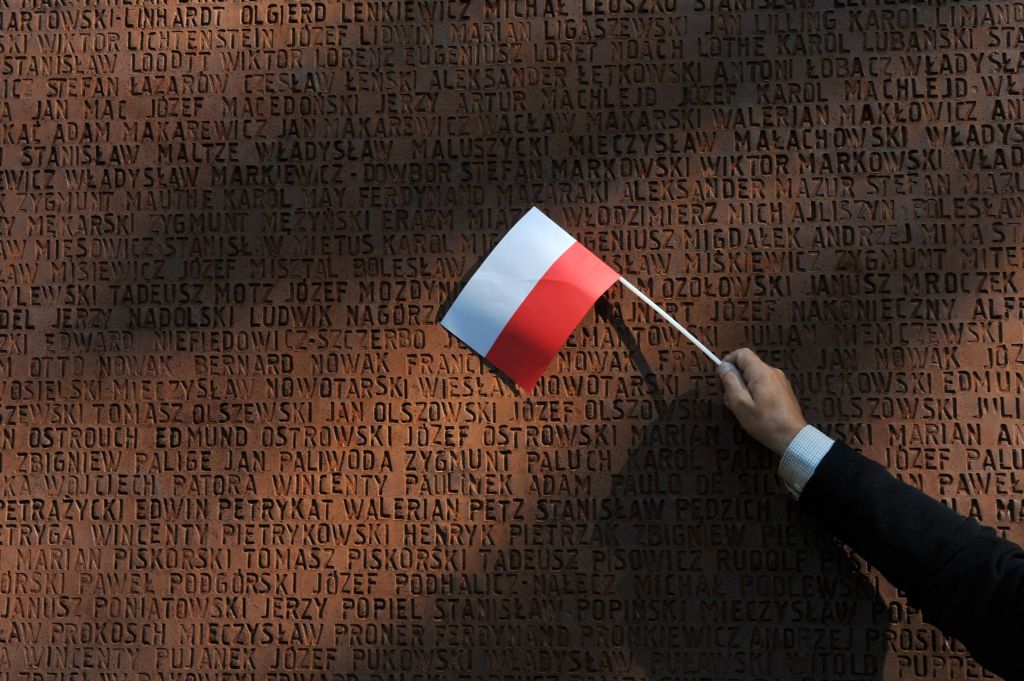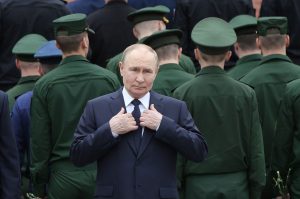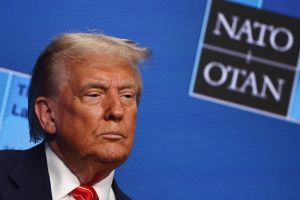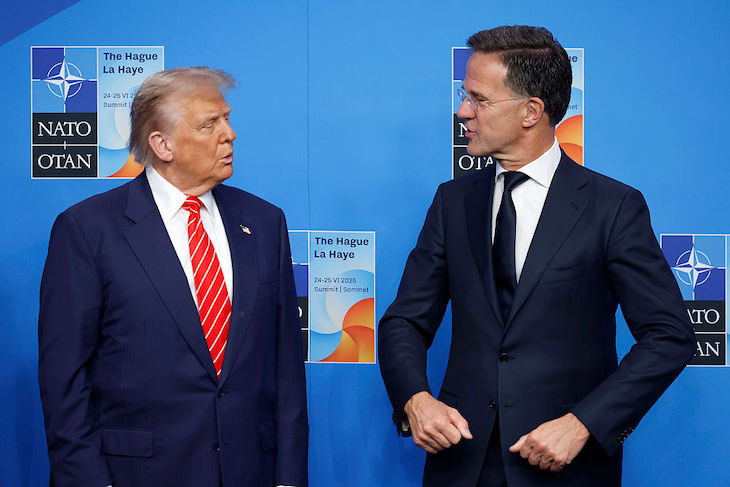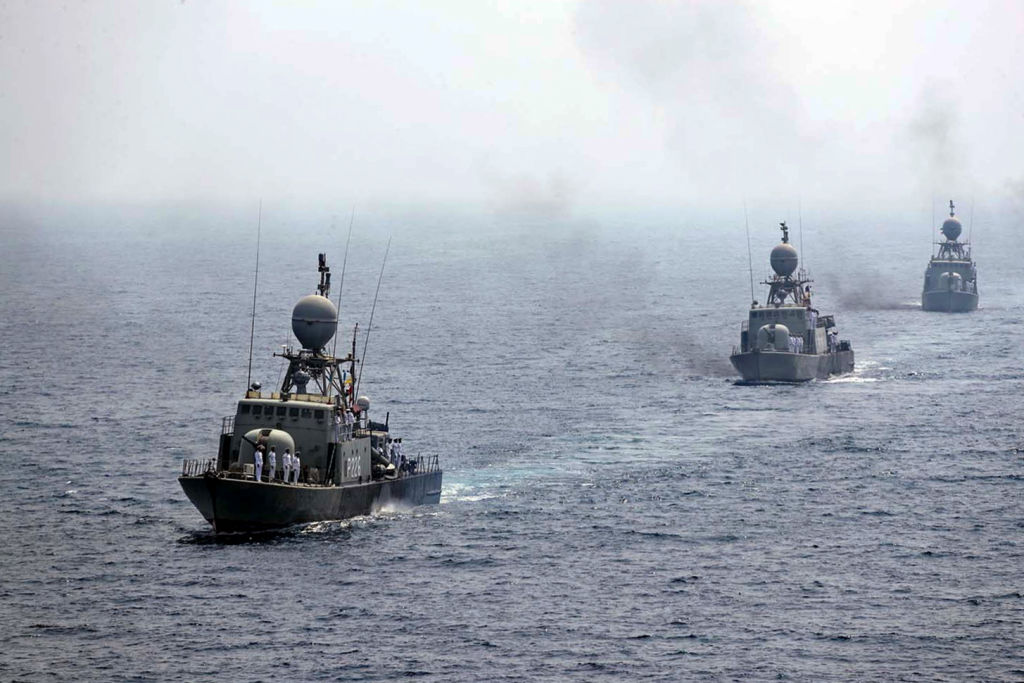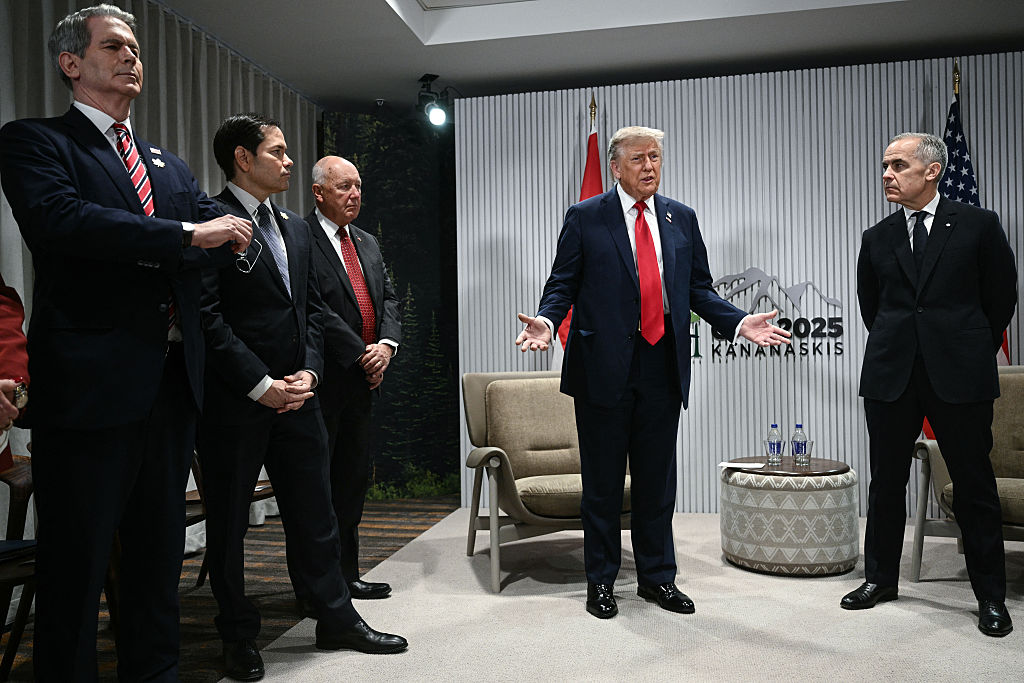Poland’s Third Republic entered the world in 1989, after a dark period of occupation and oppression at the hands first of the Nazis and then the Soviets. As democracy was taking its first tentative steps in Warsaw, the USSR still had two years left to live and Germany was not yet unified. Yet somehow, over the next thirty-four years, Poland went from a poor post-communist state to a rapidly rising economic powerhouse and serious geopolitical force.
Nothing about this rise was inevitable. Human agency, unforeseen events and providence play into every historical development — and Poland’s remarkable progress is no exception. It took leadership, will and luck.
A central desire of the Polish people since long before 1989 has been to become a part of the West’s vision of Europe. “Let me explain to you how important it was — how it has always been — for Poland to aspire to be a part of Europe,” Polish ambassador to the United States Marek Magierowski tells me. “I am using that term deliberately, not part of the EU or NATO, the two organizations we joined afterwards, but part of Europe, a political and economic entity with its own values, with its own free-market foundations.”
But the Poles knew simply becoming Westernized would not secure their future — they had to join the organizations that underpin Western power. “They were on the fastest track they possibly could be to both EU and NATO membership, and they conveyed that directly to Western leaders,” says Dan Hamilton of the Brookings Institution.
Before Warsaw could enter either organization, however, it needed to engage in massive political and economic reform. Luckily for Poland, a robust civil society already existed, underpinned by the Catholic Church and the Solidarity movement. This proved to be an immense help in enacting the necessary changes. “Among the Central and Eastern European countries, Poland and Hungary were basically relatively open societies already prior to the transition,” says Michael Landesmann of the Vienna Institute for International Economic Studies. “So, in terms of the political atmosphere,” he continues, “it was more ready than many of the other communist countries.”
Through the 1990s the country underwent “shock therapy,” via the rapid liberalization of its economy to jumpstart growth. “There was an almost immediate liberalization of prices, and an opening of the economy to trade, and to some extent financial flows,” says Landesmann. “At the beginning of the 1990s there was an eruption of that particular spirit of entrepreneurship,” Ambassador Magierowski tells me, “So many businesses set up, mushrooming all over Poland.”
A fairly well-educated and skilled industrial workforce combined with low labor costs to make Poland an attractive place to invest. Foreign companies, particularly from Germany, flooded in, taking advantage of both the availability of workers and Poland’s location, right next to Europe’s economic powerhouse and at the juncture of East-West trade on the Continent. “Almost all of the manufacturing here [in Europe] is concentrated in… the Central European manufacturing core,” notes Landesmann. Car parts are a particularly large industry. Ambassador Magierowski comments that Poles “used to joke that the best German cars are manufactured, actually, in Poland.” Poland is also a center for furniture manufacturing — much of it goes to IKEA —and has a massive (and politically powerful) agricultural industry. Member of the European Parliament Radosław Sikorski puts it bluntly: “It is still an industrial economy: we don’t just do financial hanky-panky. We still make things.” The progress has been impressive. According to the World Bank, Poland’s gross domestic product in 2021 was over 300 percent larger (in constant 2015 US dollars) than it was in 1990, compared to 155 percent for the EU as a whole.
Though it happened later than in many post-communist states, Poland’s privatization efforts were managed particularly well. “In Poland, it happened more transparently and with less contestation than some of the other places where cronies got hold of massive assets,” says Dalibor Roháč of the American Enterprise Institute. To avoid cronyism, Poland made sure to take on corruption directly. “Poland was ruthless in terms of going after people who had collaborated or profited off of structures,” Landesmann comments.
Another important economic development was the evolution of the banking system. Facing a banking crisis in the early 2000s, Poland underwent what Landesmann calls a “cleansing process,” resulting in greater banking regulation and a more resilient banking system by the time the Great Recession came around in 2008. Remarkably, Poland managed to escape a recession during that crisis, bucking the European trend. The banks’ resilience was helped also by the Polish population’s aversion to the sort of financial wizardry of many Western banks. Wojciech Przybylski of Visegrad Insight attributes some of this to a “farmer’s mentality.” Still with a deep connection to rural, small-town traditions, Poles are no nonsense and value clarity, he says.
Arguably the most critical development of the past two decades has been Poland’s accession to the EU. Since Poland joined in 2004, the EU has offered access both to the single market and to structural funds equivalent to 3 to 4 percent of GDP. Compared to other new entrants, Poland used the money with particular foresight and success, for example to modernize the country’s infrastructure — from roads, to railways, to public transport — which Przybylski says was critical to Poland’s continued economic growth, helping to draw investment and grease the wheels of the economy. The Polish economy continues to benefit from its strong foundation and established practices, with growth in 2022 hitting 4.9 percent, though it is expected to fall to 0.7 percent in 2023 and 2.6 percent in 2024. But even in in strained times, Poland is set to perform better than most Western European economies.
However, the solidity of the rule of law is an increasing concern; it has been a contentious issue since the ruling coalition embarked on judicial reforms after its 2015 election victory: questions about the stability of a legal system lead to jittery investors. Making matters worse, the government recently passed a law that would, as Przybylski says in a recent article, “set up a politically controlled administrative procedure to eliminate people it accuses of conspiring with Russia from the electoral race, namely Donald Tusk — the opposition leader.”
The rapid growth of the state has also raised some red flags. “The role that the state plays in the economy is certainly larger than it was before 2015 in terms of sheer state ownership and involvement,” says Roháč. “They even bought back stakes in some of the utility companies and energy firms.”
A country’s power is not predicated on economic strength alone, however. Poland’s most publicly visible progress since the transition to democracy has been its rapidly growing role in geopolitics. Poland’s historical position under the boot of powerful foreign foes is key. “We have been neighbors of Russia for 500 years, and there is a lot of history,” says Sikorski, “and being closer and weaker we pick up intimations of danger much earlier than Westerners.”
Warsaw recognized Russia’s post-USSR threat long before most other Western powers took it seriously. “We are the country that consistently warned the West about Putin, about the lack of NATO military readiness on the Eastern Flank,” says Sikorski. “We argued for writing the contingency plans, that was under Obama, and we argued for a physical American presence for exercises. And we protested the Nord Stream investment and warned about what would happen in Crimea and Donbas.”
Where France, Germany and even America dithered, Poland acted. Around the time of Russia’s 2008 invasion of Georgia, Sikorski, then minister of foreign affairs, notes that he “set up a Polish consulate in Sevastopol — it was the only NATO/EU consulate in that city — to monitor developments there, because I expected it to be the Gdansk of the twenty-first century, and so it proved.” Preemptive action also has tangible benefits: “When the Russians started the Anschluss of Crimea,” Sikorski goes on, “we had up to the minute information, which, of course, I shared with allies.”
Since the Russian invasion of Ukraine last year, Poland has been at the forefront of support for Kyiv. “When we saw pictures from Bucha and Irpin, all of those unspeakable atrocities committed by Russians in Ukraine,” says Ambassador Magierowski, “we always recall Russian occupation in Poland.” More concretely, Poland knows that it could face the same fate as Ukraine. “The sense that they are next on Russia’s list is very strong in Poland,” says Roháč.
Millions of Ukrainian refugees have since poured into Poland, welcomed with open arms. “Poland had this reputation that [it] was averse to migration… and then you had 3, 4 million people come within the scope of a couple of weeks or months,” comments Roháč. “And they all found accommodation with Polish families; everybody had somebody from Ukraine living with them at some point.”
Warsaw has also provided among the most significant quantities of military aid to Ukraine, including hundreds of main battle tanks, both of Soviet-vintage and modern manufacture, self-propelled howitzers, and MiG-29 fighter jets. It has consistently pushed for other nations to supply more and better weaponry, and has been clear-eyed about the need for a complete Ukrainian victory. “We not only believe in ultimate Ukrainian victory — we think that we should define Ukraine’s victory as the disappearance of all Russian troops from Ukraine’s territory, and the entire territory that belonged to Ukraine before 2014, including Crimea,” says Ambassador Magierowski.
Unlike many of its Western European partners, Poland has taken some of the most dramatic steps on the Continent in modernizing and expanding its military over the past few years. Indeed, Warsaw is set to spend about 4.3 percent of its GDP on defense in 2023 — about one percentage point ahead of the United States.
There are obstacles ahead, however. Poland has had a rough relationship with the EU since the governing coalition began reforming the judiciary, lessening the influence Warsaw could otherwise have. “I think the Polish voice would have been much stronger, including in this current war, if Poland hadn’t been involved in this ongoing fight with Brussels over the court system,” Roháč asserts.
The judicial changes and the new law potentially excluding opposition politicians from elections, along with some of the government’s other actions, have many worried about the strength of Polish institutions. As Przybylski says, Warsaw might turn “from being a linchpin of NATO to another problematic member — a non-democracy that fast-tracks militarism.” “State-controlled companies are already conducting campaigns with their money for the ruling party,” says Sikorski, and “state resources are used to fund those areas of the country which favor the government.” This is bad for democracy, and will continue to harm Poland’s relations with its allies.
Poles will vote this year — with much at stake — but there is one policy area that is unlikely to feel much turbulence: security and defense. Both the ruling Law and Justice Party and the opposition Civic Platform have very similar (though not identical) views regarding Polish security vis-à-vis NATO, the US and Russia.
With strong economic and security foundations, Poland’s rise is unlikely to stop anytime soon, but it faces challenges, including in relation to the rule of law and the strength of democratic institutions more generally. How these issues are handled will determine the country’s prospects. Warsaw’s ascendancy since the collapse of communism, however, is nothing short of extraordinary — and for that the credit goes to the Polish people.
This article was originally published in The Spectator’s July 2023 World edition.



